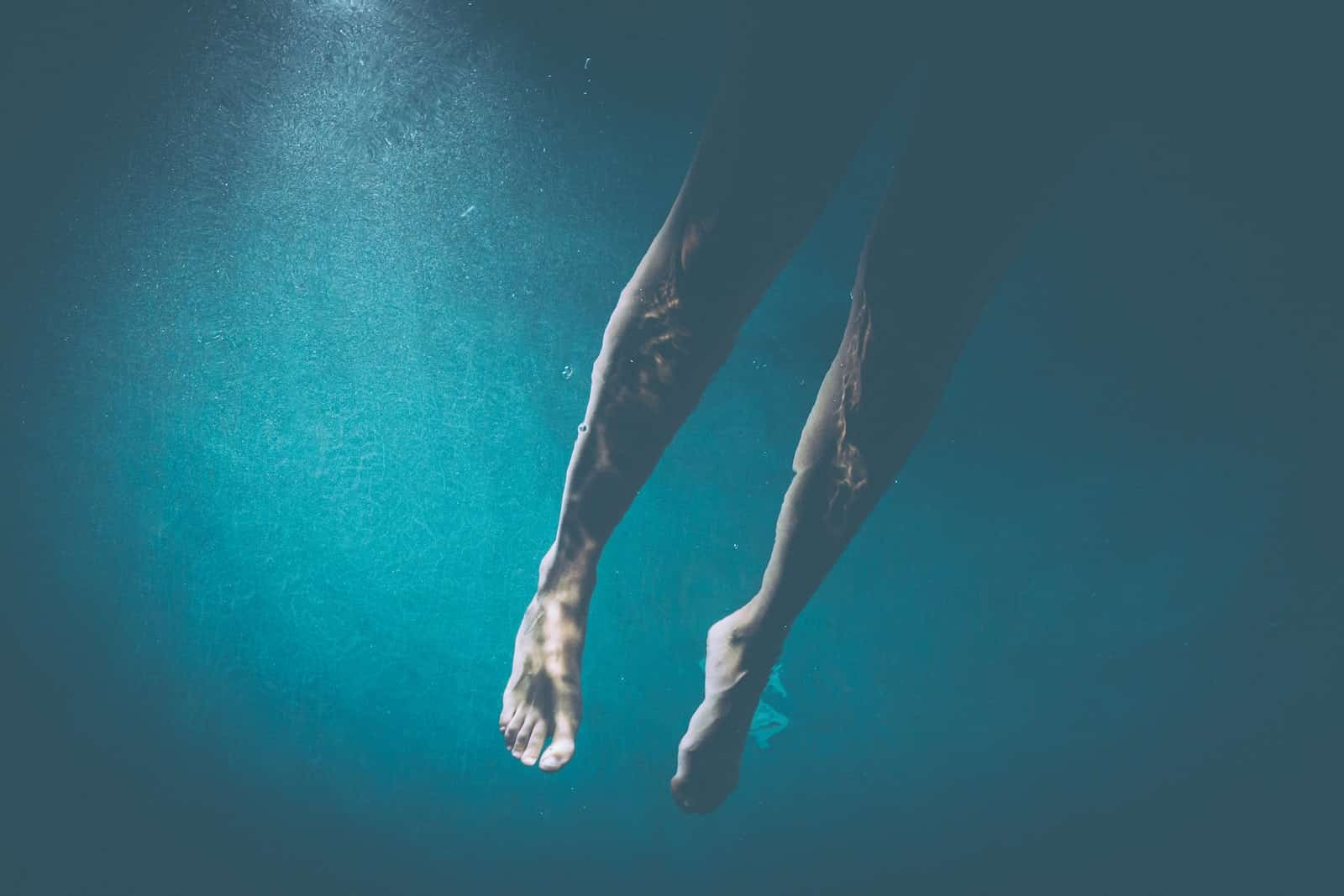Dreaded Kick Sets

Do you have “runner’s kick”? Lots of triathletes do! And it’s not a good thing, if you want to get better in your swim.
Can you point your toes and straighten out your feet? When you kick on your back or with a float, do you tend to go very slow, stay in one place, or even go backwards? Do you have a tough time with swimming drills because your kick is not propelling you forward fast enough, or even worse, dragging you down?
Do you wear fins in workouts just to “keep up”?
Did you start out as a runner and pick up swimming later to become a Triathlete?
If you answered “yes” to any of the above, you may have Runner’s Kick! Have no fear, there are things you can do. Even the worst of kickers can develop an adequate kick for freestyle, which is all you need for a triathlon swim.

Runners kick
Here are some remedies:
Arms By Your Sides
I’m a big fan of physical feedback, something that reminds you, cues you in to what you need to do. Try this when standing: press your right thumb into the side of your glutes, then swing your right leg back and forward from the hip. Hopefully you should feel the muscle engage and tense. Now bend your right knee and flick your foot back and forth, hopefully your glute will go soft. That tension through your glutes is what you want to feel; a sign that you are kicking from your hips (and not from the knee). Try kicking face down with your thumbs pressed into your backside as a reminder for 25m. Alternatively you could do side kick, with the top arm/thumb providing your feedback.
Vertical Kick
Find water that is deep enough for you to kick in place. Let go of the wall, cross your arms, and kick in place in a vertical position (keep in a straight line), pointing your toes and keeping your chin above the surface of the water. Get your power from your quads and hips on this drill. Try 20 seconds at a time. If you’re already a strong kicker, lift your hands out of the water. If that is easy, go streamlined!
Use Fins
Yes! I am a coach telling you to use fins. But not to”keep up” in workouts. Use fins for a few weeks, but wean off them as you get closer to your event. The shorter kind are the only ones worth using. I prefer Zoomers but other brands may work okay as well. Fins can increase your ankle flexibility, allow you to do swimming drills with ease, and strengthen the right leg muscles you need to kick.
Increase Ankle Mobility
Sit on your feet. For more severe cases of Runner’s Kick, sitting on your feet can greatly improve your ankle flexibility. In Yoga, just stay in “Child’s Pose” a little longer and gain this extra benefit. Or just generally stretch. In a seated position, take one leg and bring it out in front of you. Extend your feet and push your toes toward the ground. Hold for about 15-20 seconds, repeat with other foot. You can do this several times a day.
Whatever you do, don’t be tempted to use a kick board to improve your kick. When you already have a poor kick, something like a float will ruin your body position in the water and make life harder for you – either dumping your hips low in the water or forcing you to bend your knees which is what we don’t want!
Do I Need To Improve My Kick?
Remember: You don’t need a super kick to have a great race in a triathlon. Your kick is mainly for stability and body rotation, or small accelerations. A good strong, stable kick will aid good body position, and take pressure off your shoulders. My old coach used to tell me that 40% of your sessions should be kick! (Admittedly I was swimming 20+ hours a week, and over 75k most weeks!) The reasoning for this is that your legs use around 70-80% of your oxygen, but only provide up to 30% of your propulsion. In the same way that you do more cycling and running to improve their efficiency, you should do at least some kick drills to improve your kicking. I’d recommend around 5-10% to most triathletes of your average swim volume. In a 2k swim set, that equates around 200m. Not much at all, especially in a warm up or cool down.

Keep your legs long and relaxed.
Have patience, stick with these drills, and you will lose your Runners’ Kick before you know it!
Take your time with learning this – as with any skill. The point is that drills are there to make you smoother, stronger, more efficient. Make sure you hit all those target points!
If you have any questions or comments, please feel free to get in touch; either by email, facebook or leave a comment on here!
If you want to get your swim looked at, just book in here for a 121 or a video swim analysis!
See what’s up next week for our #SwimTechTues tip!
